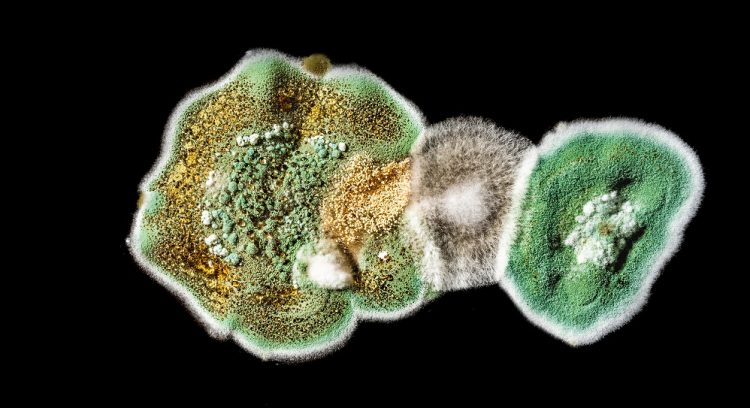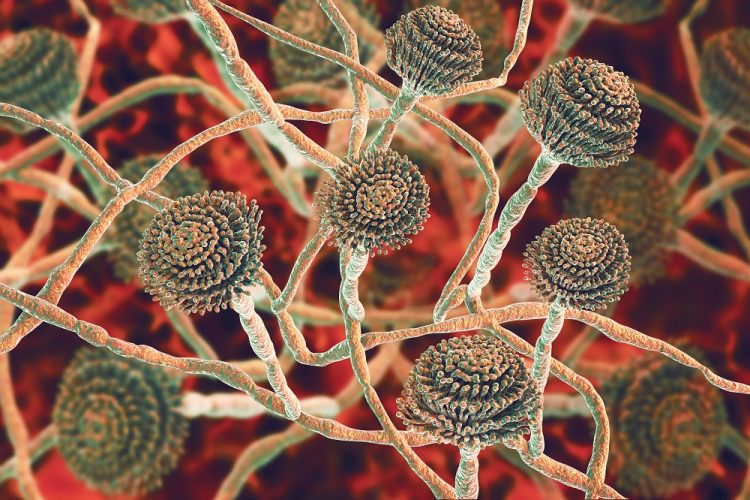Many homeowners, especially in the US, have been indoctrinated that black mold is dangerous as it decreases air quality and can be potentially toxic. This belief has been exacerbated by years of media portrayal and marketing.
Academic studies provide insufficient data supporting that black mold species pose any critical threat to human health. With countless species of mold exhibiting a dark or black pigmentation, one genus in particular has accumulated negative perception – Stachybotrys. Two species under that genus, S. chartarum and S. chlorohalonata, are colloquially called “black mold” in the United States. While these species do produce mycotoxins, insufficient evidence supports the association of this mold to poor health.
This article will briefly discuss molds, black molds, mycotoxins, and what the color of the species indicates.
Mold Explained

Molds are a group of fungi, not unlike the common mushroom, that are capable of growing in almost any surface – as long as the surface achieves all the necessary conditions. They are multicellular organisms which distinguish them from bacteria. Molds also grow as filamentous colonies, unlike other fungal groups that exclusively grow as yeasts.
While the growth of mold on a wall is distinctly visible, fungi are present everywhere. Fungi produce spores, microscopic cells that are capable of lying dormant until the necessary conditions are met for the spore to grow. Being ubiquitous, spores are found in drinking water and in the air. On average, studies reveal that every breath of air contains between 1-10 spores – which means a person can inhale between 20,000-200,000 spores every day.
While fungal spores are especially prevalent in the environment, they pose little threat to humans in particular as the human body is not the ideal environment for fungi to grow in. Like any organism, mold requires water, food, and oxygen to thrive.
Because of the living conditions required by mold, they are most often found growing on moist or damp wooden surfaces such as wallboards, ceiling tiles, and cardboard. Granted, as long as there is organic matter for them to consume and the other pre-requisites are met, mold can grow (e.g., dust found on concrete).
Like most fungi, molds are highly morphologically diverse. This means that molds can be of any size and shape. While some species are restricted to certain morphological characteristics, some species can have a wide array of morphological features depending on their environment. One of these morphological features that will be expounded on is color.
Not all molds produce relatively toxic compounds that can lead to serious health issues. However, molds constitutively contribute foreign materials in the air (e.g., spores, hyphae, etc.) that can cause allergic reactions and respiratory irritations.
Molds have been commonly attributed to damp building-related illnesses (DBRI) (also known as sick building syndrome). These include a wide array of respiratory, immunological, and neurological symptoms that are commonly associated with a specific building. While inadequate cleaning methods are the primary culprit of DBRI, the occurrence of mold is a subsequent factor.
Black Mold
In the United States, the name black mold is often used to refer to two specific species of mold: Stachybotrys chartarum (previously Stachybotrys atra) and Stachybotrys chlorohalonata. However, these are by all means not the only species of mold that can exhibit a dark or black pigmentation.
Other genera such as Aspergillus, Cladosporium, and Nigraspora all include multiple species that can produce colonies exhibiting dark or black pigmentation. This is why the Centers for Disease Control and Prevention (CDC) reports that while molds can pose as a health hazard to people with weaker immune systems and children prone to developing asthma, color is not an indication of how dangerous a mold may be.
Concern for Stachybotrys species arose from numerous studies. A 1998 paper published in the Archives of Pediatrics and Adolescent Medicine studied the incidence of acute pulmonary hemorrhage in infants with respect to fungal exposure. With an emphasis on S. chartarum, the study found that five out of the ten infants with acute pulmonary hemorrhage lived in homes with viable S. chartarum spores in the air.
A 2003 paper published in Clinical Microbiology Reviews discussed that the concern for Stachybotrys (emphasized with S. chartarum) has been brought up by numerous studies associating the fungus with serious illness. However, the review concludes that most of these studies suffer from methodological flaws and inconsistencies, thus making their findings inconclusive.
While being regarded by the general public as a serious health hazard, the most common symptoms caused by black mold contamination include dizziness, nasal congestion, flu-like symptoms, sore throat, chronic coughing, and skin rashes. The more extreme symptoms that have presented in special cases include asthma attacks and lung complications.
Mycotoxins

Mycotoxins refer to the naturally occurring compounds fungi produce that have toxic properties. These mycotoxins are often secondary metabolites, which means that fungi produce them as a result of their metabolic activities, but they are not necessarily needed for survival.
Oftentimes, mycotoxins are more of a concern in agriculture. Specific fungal genera such as Fusarium and Alternaria grow on agricultural crops and stores. These are problematic because contaminated agricultural products are then unsafe to consume, conferring economic loss to the farmers.
Stachybotrys species have been found to produce certain mycotoxins, specifically macrocyclic trichothecene mycotoxins. However, these are especially uncommon. Even warned as the dangerous kind of black mold, not all kinds of S. chartarum produces these mycotoxins. As of now, there are only two types, or chemotypes, of S. chartarum that produce mycotoxins. One has been found to produce highly toxic macrocyclic trichothecene mycotoxins while the other chemotype produces less toxic atranones and simple trichothecenes but not macrocyclic trichothecenes.
Even when some fungi have been known to produce deadly mycotoxins that would cause food to be unsafe to eat, these fungi exhibit different cases depending on the environment. A 2005 review published in Applied Microbiology and Biotechnology reports that fungi such as Penicillium and Aspergillus are major contaminants of food and feed products. However, the same fungi were observed to produce different sets of mycotoxins when isolated from damp buildings.
While there are reports of toxic mold causing serious or rare health issues such as pulmonary hemorrhages or even memory loss, the CDC and the World Health Organization (WHO) agree that these reports are rare and the studies linking molds to these health issues have been insufficient.
A 2010 review published in the Applied Occupational and Environmental Hygiene called upon the assessment of industrial hygienists to inspect both residential and commercial buildings for molds and mycotoxins. The review and the assessments confirm that while there are reports of high levels of mold capable of conferring poor health and hazardous health issues, the average levels of mold in mold-contaminated buildings were insufficient to induce health issues as reported in some literature.
Final Thoughts
By all means, studies unanimously agree that mold can produce foreign materials that can lower the quality of indoor air – possibly triggering respiratory irritation and allergic responses.
The worst-case scenario would be for immunosuppressed individuals as fungal infections are commonplace and potentially life-threatening. But for the majority of the population with adequate immune systems, mold is not a critical situation. For overall safety, it is still recommended as the best course of action to remove any mold that has been detected to prevent it from spreading and growing into a more probable health hazard.
References:
- https://link.springer.com/article/10.1007/BF02447205
- https://cmr.asm.org/content/16/1/144.short
- https://jamanetwork.com/journals/jamapediatrics/article-abstract/189798
- https://academic.oup.com/toxsci/article/104/1/4/1717327?login=true
- https://www.cdc.gov/mold/faqs.htm
- https://link.springer.com/article/10.1007/BF00381430
- https://www.tandfonline.com/doi/abs/10.1080/10473220050129419
- https://link.springer.com/article/10.1007%2Fs00253-004-1753-9
